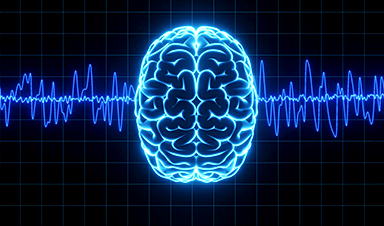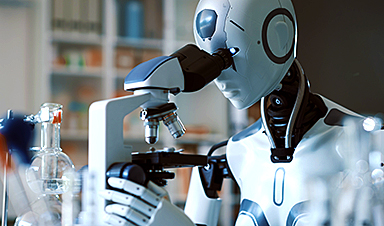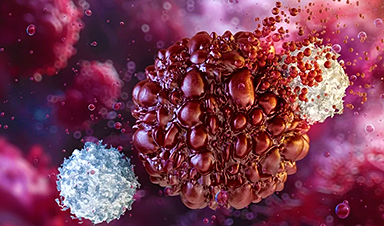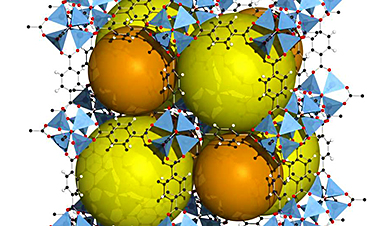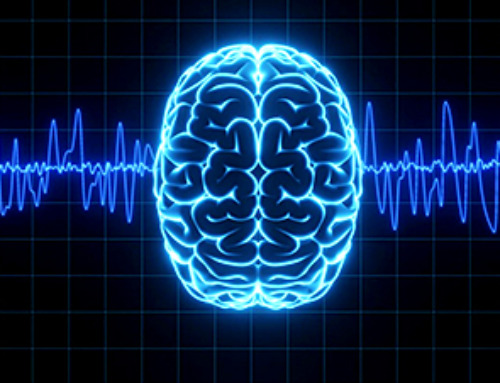

The EVONANO platform allows scientists to grow virtual tumors and use artificial intelligence to automatically optimize the design of nanoparticles to treat them.
The ability to grow and treat virtual tumors is an important step towards developing new therapies for cancer. Importantly, scientists can use virtual tumors to optimize design of nanoparticle-based drugs before they are tested in the laboratory or patients. The paper, “Evolutionary computational platform for the automatic discovery of nanocarriers for cancer treatment,” is published today in the Nature journal Computational Materials.
The paper is the result of the European project EVONANO which involves Dr. Sabine Hauert and Dr. Namid Stillman from the University of Bristol, and is led by Dr. Igor Balaz at the University of Novi Sad.
“Simulations enable us to test many treatments, very quickly, and for a large variety of tumors. We are still at the early stages of making virtual tumors, given the complex nature of the disease, but the hope is that even these simple digital tumors can help us more efficiently design nanomedicines for cancer,” said Dr. Hauert.
Dr. Hauert said having the software to grow and treat virtual tumors could prove useful in the development of targeted cancer treatments.
“In the future, creating a digital twin of a patient tumor could enable the design of new nanoparticle treatments specialized for their needs, without the need for extensive trial and error or laboratory work, which is often costly and limited in its ability to quickly iterate on solutions suited for individual patients,” said Dr. Hauert.
Nanoparticle-based drugs have the potential for improved targeting of cancer cells. This is because nanoparticles are tiny vehicles that can be engineered to transport drugs to tumors. Their design changes their ability to move in the body, and correctly target cancer cells. A bioengineer might, for example, change the size, charge or material of the nanoparticle, coat the nanoparticles with molecules that make them easy to recognize by cancer cells, or load them with different drugs to kill cancer cells.
Using the new EVONANO platform, the team were able to simulate simple tumors, and more complex tumors with cancer stem cells, which are sometimes difficult to treat and lead to relapse of some cancer patients. The strategy identified nanoparticle designs that were known to work in previous research, as well as potential new strategies for nanoparticle design.
As Dr. Balaz highlights: “The tool we developed in EVONANO represents a rich platform for testing hypotheses on the efficacy of nanoparticles for various tumor scenarios. The physiological effect of tweaking nanoparticle parameters can now be simulated at the level of detail that is nearly impossible to achieve experimentally.”
The challenge is then to design the right nanoparticle. Using a machine learning technique called artificial evolution, the researchers fine tune nanoparticle designs until they can treat all scenarios tested while preserving healthy cells to limit potential side-effects.
News
Yale Scientists Solve a Century-Old Brain Wave Mystery
Yale scientists traced gamma brain waves to thalamus-cortex interactions. The discovery could reveal how brain rhythms shape perception and disease. For more than a century, scientists have observed rhythmic waves of synchronized neuronal activity [...]
Can introducing peanuts early prevent allergies? Real-world data confirms it helps
New evidence from a large U.S. primary care network shows that early peanut introduction, endorsed in 2015 and 2017 guidelines, was followed by a marked decline in clinician-diagnosed peanut and overall food allergies among [...]
Nanoparticle blueprints reveal path to smarter medicines
Lipid nanoparticles (LNPs) are the delivery vehicles of modern medicine, carrying cancer drugs, gene therapies and vaccines into cells. Until recently, many scientists assumed that all LNPs followed more or less the same blueprint, [...]
How nanomedicine and AI are teaming up to tackle neurodegenerative diseases
When I first realized the scale of the challenge posed by neurodegenerative diseases, such as Alzheimer's, Parkinson's disease and amyotrophic lateral sclerosis (ALS), I felt simultaneously humbled and motivated. These disorders are not caused [...]
Self-Organizing Light Could Transform Computing and Communications
USC engineers have demonstrated a new kind of optical device that lets light organize its own route using the principles of thermodynamics. Instead of relying on switches or digital control, the light finds its own [...]
Groundbreaking New Way of Measuring Blood Pressure Could Save Thousands of Lives
A new method that improves the accuracy of interpreting blood pressure measurements taken at the ankle could be vital for individuals who are unable to have their blood pressure measured on the arm. A newly developed [...]
Scientist tackles key roadblock for AI in drug discovery
The drug development pipeline is a costly and lengthy process. Identifying high-quality "hit" compounds—those with high potency, selectivity, and favorable metabolic properties—at the earliest stages is important for reducing cost and accelerating the path [...]
Nanoplastics with environmental coatings can sneak past the skin’s defenses
Plastic is ubiquitous in the modern world, and it's notorious for taking a long time to completely break down in the environment - if it ever does. But even without breaking down completely, plastic [...]
Chernobyl scientists discover black fungus feeding on deadly radiation
It looks pretty sinister, but it might actually be incredibly helpful When reactor number four in Chernobyl exploded, it triggered the worst nuclear disaster in history, one which the surrounding area still has not [...]
Long COVID Is Taking A Silent Toll On Mental Health, Here’s What Experts Say
Months after recovering from COVID-19, many people continue to feel unwell. They speak of exhaustion that doesn’t fade, difficulty breathing, or an unsettling mental haze. What’s becoming increasingly clear is that recovery from the [...]
Study Delivers Cancer Drugs Directly to the Tumor Nucleus
A new peptide-based nanotube treatment sneaks chemo into drug-resistant cancer cells, providing a unique workaround to one of oncology’s toughest hurdles. CiQUS researchers have developed a novel molecular strategy that allows a chemotherapy drug to [...]
Scientists Begin $14.2 Million Project To Decode the Body’s “Hidden Sixth Sense”
An NIH-supported initiative seeks to unravel how the nervous system tracks and regulates the body’s internal organs. How does your brain recognize when it’s time to take a breath, when your blood pressure has [...]
Scientists Discover a New Form of Ice That Shouldn’t Exist
Researchers at the European XFEL and DESY are investigating unusual forms of ice that can exist at room temperature when subjected to extreme pressure. Ice comes in many forms, even when made of nothing but water [...]
Nobel-winning, tiny ‘sponge crystals’ with an astonishing amount of inner space
The 2025 Nobel Prize in chemistry was awarded to Richard Robson, Susumu Kitagawa and Omar Yaghi on Oct. 8, 2025, for the development of metal-organic frameworks, or MOFs, which are tunable crystal structures with extremely [...]
Harnessing Green-Synthesized Nanoparticles for Water Purification
A new review reveals how plant- and microbe-derived nanoparticles can power next-gen water disinfection, delivering cleaner, safer water without the environmental cost of traditional treatments. A recent review published in Nanomaterials highlights the potential of green-synthesized nanomaterials (GSNMs) in [...]
Brainstem damage found to be behind long-lasting effects of severe Covid-19
Damage to the brainstem - the brain's 'control center' - is behind long-lasting physical and psychiatric effects of severe Covid-19 infection, a study suggests. Using ultra-high-resolution scanners that can see the living brain in [...]

